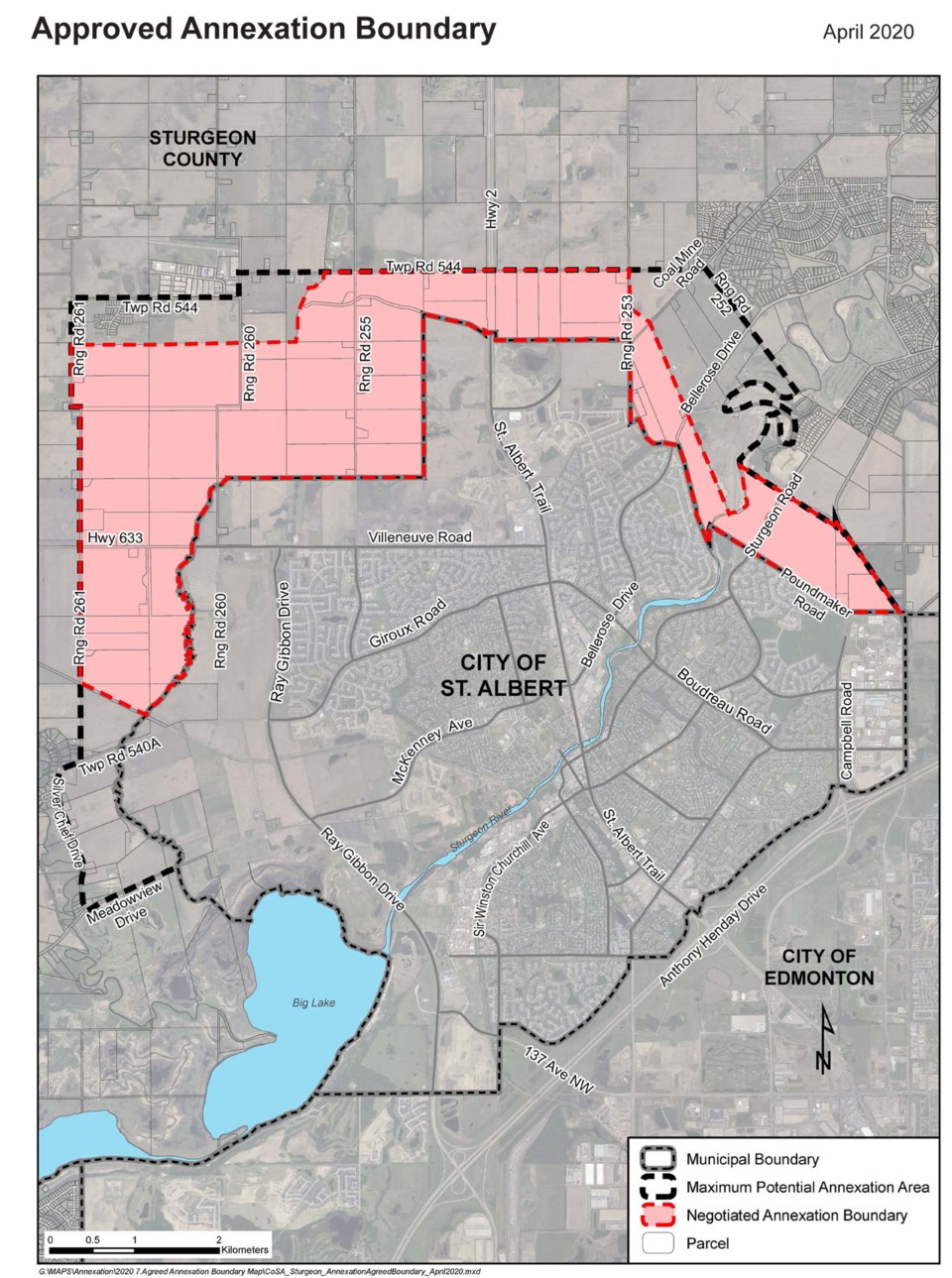St. Albert will grow by a Morinville-and-a-half under the final terms of its annexation with Sturgeon County, area mayors revealed last week.
The St. Albert/Sturgeon County annexation negotiation subcommittee announced April 23 it had finalized the boundary line for the city’s proposed annexation of land from the county.
St. Albert formally announced its intent to annex land from Sturgeon County in 2017 after years of negotiations. The two governments struck an annexation subcommittee to work out the details.
The annexation originally proposed to have the city annex up to 2,180 hectares (about two Morinvilles) from the county. The subcommittee whittled that down to 1,558 hectares (about 1.4 Morinvilles), carving off chunks of land in the southwest, northwest and northeast parts of the proposed annexed area.
St. Albert Mayor Cathy Heron said the city and the county dropped the southwest and northeast portions as they were too expensive to service. The northwest lands were excluded at the county’s request to address their needs around non-residential growth and drainage.
Heron said the city had proposed this annexation as it needs room to grow, having just 15 years of open land left. This deal would net the city 30 to 50 years of space if approved by the province.
While the city has yet to draw up plans for the lands, Heron said they would be developed in accordance with the Edmonton Metropolitan Region Board’s growth plan, which requires cities to build dense developments and preserve agricultural land.
“The value of agricultural land is so important in Alberta,” Heron said, especially in this era of the COVID-19 pandemic. Local farmland not only provides communities with secure food supplies, but also supports the local economy.
Given the current state of the economy, it will likely be a long time before farmers here have to worry about development taking over their lands, Sturgeon County Mayor Alanna Hnatiw said.
“Although they’re transitioning into being citizens of St. Albert, they will still be farming that land for many years to come.”
Unanswered questions
Included in the annexation area is Riverlot 56. Heron said these lands are a frequent source of recreation for city residents, many of whom already assume them to be part of St. Albert.
“We believe we will be good stewards of that piece of land,” Heron said, which also has great historic significance to the city.
“I’m just really happy we’re going to bring that (land) into our boundary.”
Heron said it is unclear how these lands would be affected by the province’s recent proposal to remove Riverlot 56 from the provincial parks system. The province is scheduled to reveal more details on what would happen to these parks on May 1.
Heron said the subcommittee next has to figure out how people in the annexed zone will be taxed – specifically, when residents will switch to city tax rates from county ones. The group is also studying how to change about 40 bylaws to ensure residents could continue county-style living post-annexation and how St. Albert should compensate Sturgeon for this land exchange.
The subcommittee next meets May 25. See bit.ly/3eXo5TS for details.




